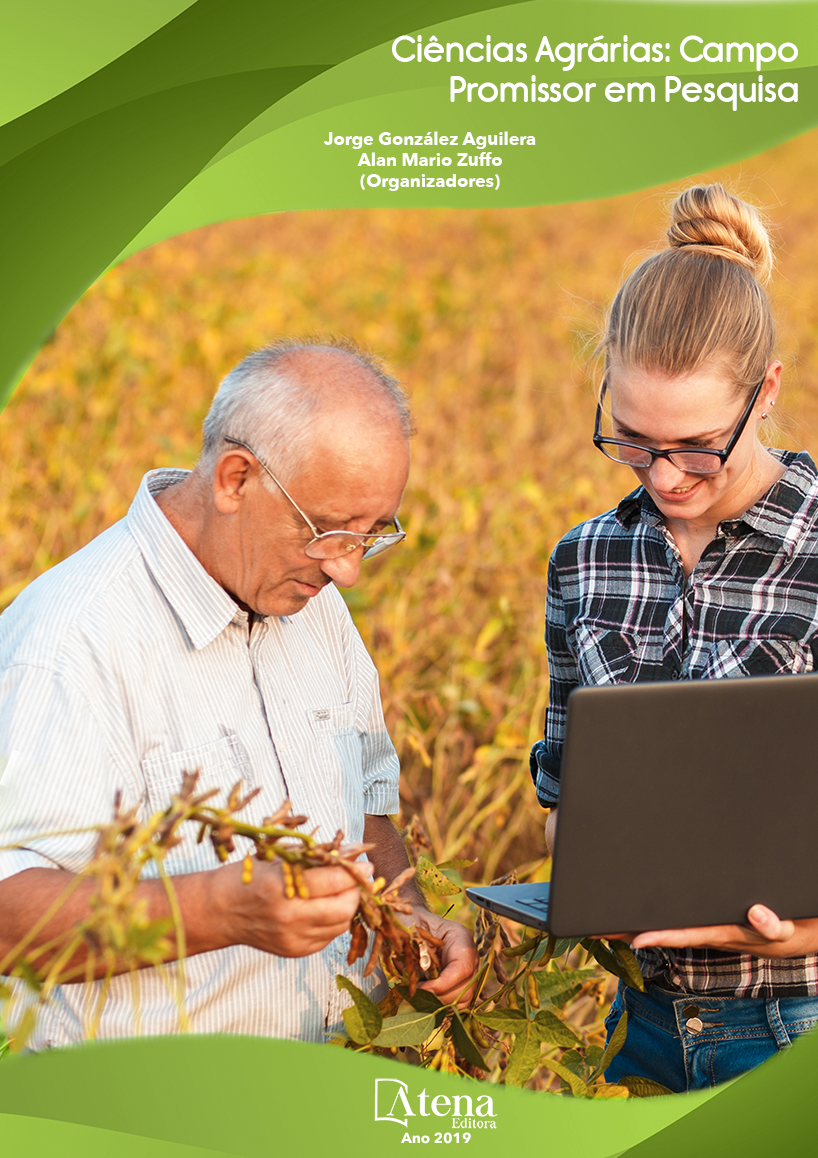
LEVANTAMENTO DE MOSCAS BRANCAS (Bemisia tabaci) NA CULTURA SOJA, EM UM MUNICÍPIO DO NOROESTE DO RS: ANO I
O agronegócio da soja, Glicyne max
(L.) Merrill, é uma das atividades econômicas
mais importantes do Brasil e, atualmente, em
franca ascensão em razão da possibilidade da
produção de biodiesel a partir do óleo de seus
grãos. Existem vários fatores que interferem na
sua produção, ocasionando grandes prejuízos.
Além do clima, os insetos-praga são outra
importante causa de redução da produção da
cultura de soja, entre esses a mosca-branca
Bemisia tabaci (Genn., 1889), que, no Brasil, foi
considerada por muito tempo praga ocasional.
Todavia, o biótipo B da espécie, introduzido
no Brasil no início da década de 90, vem se
tornando mais importante a cada safra. Para
tanto, este trabalho teve por objetivo avaliar a
eficiência de controle da mosca branca (bemisia
tabaci) sob aplicação de diferentes produtos
comerciais. O experimento foi estabelecido na
área experimental da universidade Federal de
Santa Maria, campus de Frederico Westphalen,
Rio Grande do Sul, na safra 2017/2018. A
cultura foi semeada em 4 épocas, sendo dia 18
de dezembro de 2017, 05 de janeiro de 2018,
23 de janeiro de 2018, e 09 de fevereiro de
2018. A cultivar de soja utilizada foi o material
TMG 7262 INOX, foi avaliado semanalmente a
partir do estádio fenológico de V6 a incidência
de mosca branca no terço médio da planta.
LEVANTAMENTO DE MOSCAS BRANCAS (Bemisia tabaci) NA CULTURA SOJA, EM UM MUNICÍPIO DO NOROESTE DO RS: ANO I
-
DOI: 10.22533/at.ed.73319110727
-
Palavras-chave: Bemisia tabaci. População. Produtividade.
-
Keywords: Bemisia tabaci. Population. Productivity
-
Abstract:
The soybean agribusiness,
Glicyne max (L.) Merrill, is one of the most
important economic activities in Brazil and,
currently, in a steady rise due to the possibility
of producing biodiesel from the oil of its grains.
There are several factors that interfere with its
production, causing great losses. In addition to
the climate, pest insects are another important cause of reduced production of soybeans, including the whitefly Bemisia tabaci (Genn.,
1889), which in Brazil has long been considered a pest. However, the biotype B of
the species, introduced in Brazil in the early 90’s, has become more important with
each crop. For this, the objective of this work was to evaluate the control efficiency
of the whitefly (bemisia tabaci) under different commercial products. The experiment
was established in the experimental area of the Rio Verde Foundation, in Lucas do Rio
Verde, Mato Grosso, in the 2015/2016 harvest. The crop was sown on December 15,
2015, the installation performed on January 8, 2016 and the harvest on April 2, 2015.
The soybean cultivar used was the TMG 132 RR material, the phonological stage that
the plant was at the time of application was V4. Ten treatments were tested in the
experiment.
-
Número de páginas: 15
- ANTÔNIO LUIS SANTI
- EZEQUIEL ZIBETTI FORNARI
- LUIZ FELIPE ROSSETTO GERLACH
- FERNANDA MARCOLAN DE SOUZA
- ISAURA LUIZA DONATI LINCK


